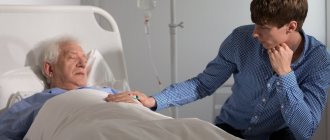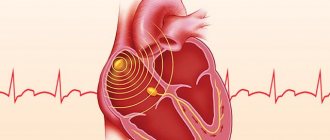Balance disorders are considered one of the subtypes of dizziness. The patient describes a similar condition: “as if the ground was falling away from under your feet.” During this period, everything begins to revolve around the patient, and the body moves in a different direction, it is carried to the side. When the intensity of the symptom is weak, the person staggers slightly, and when the severe form develops, the problem causes falls and injuries.
An unsteady gait, also called ataxic, occurs with abnormalities in the cerebellum and thalamus, and in some cases is formed due to lesions of the frontal lobes. Disturbances are provoked by neoplasms, injuries, multiple sclerosis, purulent reactions, poisoning and other anomalies of the entire body.
The diagnostic plan includes: medical history, study of the patient’s gait, neurological studies, CT scan of the pituitary gland and MRI of the brain, EEG information and laboratory tests. To get rid of an unsteady gait, antibacterial and detoxification treatment, vascular therapy, restorative medications, and exercise therapy are prescribed. In extreme cases, surgery is performed.
What is unsteadiness of movements?
Unstable movements – permanent or temporary loss of coordination. If they occur systematically, this indicates the presence of abnormal disorders in the body. Extra-systemic indicate that inflammatory processes are occurring in the body.
Most often, unsteadiness of walking manifests itself in combination with other symptoms:
- headache;
- unexplained sudden weakness;
- tingling in the legs;
- dizziness.
To better understand, it is necessary to know why a person may stagger when walking and why this is so important.
Movement is achieved through a healthy bone structure, developed muscles and healthy joints. The cerebellum is the part of the brain responsible for coordination; it is also controlled by vision and the vestibular apparatus.
Impulses pass through the spinal cord, sending a signal to the lower parts of the body that a movement needs to be performed. Only after this the muscles begin to work.
When these impulses are disrupted, the entire system is disrupted. This is where the gait disorder comes from. A transmission failure causes the legs to become unresponsive.
Failures in the musculoskeletal system lead to exactly the same result. The legs cannot correctly carry out the necessary “commands”.
If the functioning of the cerebellum is disrupted, the impulse itself does not reach, therefore, the command does not arrive at all. Consequently, a person cannot move, his legs do not obey.
Losing your balance in the dark
There may be cases of loss of balance in the dark. The disorder may occur due to chronic vestibular dysfunction. Increased symptoms in the dark are due to the fact that in such a situation vision cannot compensate for the defect. As a result, simply going to fetch water at night will cause significant difficulty and often end in a fall. Loss of balance in the dark is caused by drug intoxication, damage to the cerebellum, and disorders in the cervical spine. If the cerebellum is damaged, visual control is not important and the person will constantly experience a feeling of loss of balance.
Old age
Often, older people (over 60 years old) experience swaying, as well as “floaters” before the eyes.
It is also common to experience tinnitus and dizziness when walking. Headaches appear sharply, and sometimes even fainting occurs. As a rule, all these symptoms are ignored and blamed on age. In some cases, this may indicate problems with the body, so you should consult a doctor. This way you can ensure your usual full life.
One of the reasons is a malfunction of the cardiovascular system of the brain. Atherosclerosis appears (as mentioned above, a disease of the second category).
With age, the functioning of the vestibular apparatus is impaired.
Gait disturbance may also be due to heart disease. For example, ischemia can reduce blood circulation in the area of the ear where the organ responsible for balance is located. Also, insufficient blood circulation leads to uncertain movements. Other diseases also have a detrimental effect (arrhythmia, hypertension).
It has a great influence on gait and blood viscosity, because it supplies oxygen to the organs. How quickly it reaches the desired place, including the cerebellum, depends on its speed.
Injuries and diseases of the spine also make it difficult to transmit signals. Therefore, movement disorders are possible. Elderly people are often susceptible to sleep disorders, which leads to diseases of the third category.
The most common occurrence of maladaptation is observed. The person feels extremely insecure, there is a feeling that no one needs him, inexplicable fears and anxiety. As a result, he may skid when walking, become dizzy, have dark vision, and his condition worsens every day. For treatment, you must definitely contact professionals and it is better not to delay, because the consequences can be disastrous.
Based on all of the above, we can conclude that many factors can lead to an unsteady gait and they should not be ignored.
If the cause is eliminated, the consequences will also be eliminated. Life will be familiar, fulfilling and healthy. Therefore, it does not matter how old a person is, treatment is necessary regardless of age.
Causes of unsteady gait
There are several groups that are considered sources of imbalance. Let's consider each of them separately.
Genetic diseases
This list includes the following violations:
- Pierre-Marie ataxia - problems with coordination and other symptoms of ataxia become the main ones in the clinical picture of the pathology, they are supplemented by oculomotor and visual disturbances, and mental disorders;
- Friedreich's ataxia is a progressive degenerative disease, which is mainly diagnosed in people after 30 years of age (symptoms form at the beginning of the lesion, and are then supplemented by paresis, muscle atrophy and dysarthria);
- ataxia of a spinocerebellar nature - a segment of hereditary diseases, when an unsteady gait and clumsiness in movements are diagnosed in combination with atrophic reactions in the optic nerve, as well as with parkinsonism;
- olivopontocerebellar degenerations - the ataxic symptom is considered as a basic sign of the disease, which is supplemented by cognitive and mental disorders, secondary parkinsonism, hyperkinesis;
- Wilson-Konovalov disease - found in a rare form of the extrapyramidal-cortical type, unsteady gait is not a necessary but possible symptom (added to severe mental deficiency, epileptic seizures, pyramidal malfunctions)
Circulation problems
Usually the disease develops acutely. Doctors diagnose a stroke clinically, and consider ischemia and hemorrhage to be the source of unsteadiness. Possible provocateurs include atherosclerosis affecting the brain and its vessels, arteriovenous malformations and other vascular pathologies. Less common is gradual progression of the pathology (with Kimerli's anomaly).
About the participle of cerebellar structures he says:
- decreased muscle tone in the affected area;
- macrography;
- drawn-out Scandinavian speech.
When cortical areas are involved, typical mental changes, olfactory disorders are identified, and the grasping reflex is diagnosed. There is no hypotonia of the muscle compartment in the affected side of the body.
Tumors
Among oncological pathologies, formations in the cerebellum play one of the main roles in the formation of coordination disorders. The clinical picture of such lesions is variable:
- ataxia;
- cerebral manifestations;
- signs of compression of the brain stem.
The presented symptoms may appear in the patient simultaneously or sequentially. Unsteadiness in gait is combined with headache, dizziness, and vomiting. General cerebral manifestations are pronounced if there is an obstruction to the outflow of cerebrospinal fluid. Cerebellar anomalies tend to increase and spread.
When the tumor is located in one hemisphere, difficulties with balance are diagnosed on one side of the body. As neoplasia develops, bilateral unsteadiness of gait begins to predominate. The pituitary gland also influences the appearance of symptoms. More precisely, defeats in it.
The formation of pathologies in the brain stem is indicated by:
- strabismus;
- neuritis;
- hearing loss;
- oculomotor disturbances.
With tumors localized in the cerebral hemispheres, dizziness appears later than with cerebellar neoplasia. During ophthalmological diagnostics, congestive optic discs are noticeable on both sides. Doctors note a high rate of spread of mental disorders.
Injuries
Dizziness and problems with coordination are considered the result of intracranial hematomas, compression of the frontal areas. With acute injuries, symptoms appear within a few hours or days, and with chronic injuries, symptoms appear after a week, months or years. Patients complain about:
- dizziness;
- cephalgia;
- gagging that is not associated with food;
- epileptic seizures;
- mental disorders.
Abscesses
During the development of abscesses, the brain is affected by space-occupying lesions of the cortex and cerebellum. In this case, specific manifestations are not noticed, even if the deviation affects the pituitary gland. The infectious nature of inflammation depends on:
- injuries;
- surgical interventions;
- purulent-inflammatory lesions of the ENT department;
- rapid onset of the disease with signs of poisoning.
Additionally, an abscess is indicated by the rapid formation of unsteadiness during movement with further stabilization of neurological manifestations after the formation of the capsule. It prevents further spread of purulent masses to adjacent tissues.
Encephalitis
Atactic gait is characteristic of the secondary group of encephalitis:
- measles;
- flu;
- post-vaccination.
The chance of developing ataxia increases in severe cases of the disease with pronounced neurological abnormalities. In some cases, coordination disorders are diagnosed in patients who have previously suffered the encephalitic stage of tick-borne encephalitis.
Multiple sclerosis
Dizziness and gait problems occur early in the disease, but not all patients experience symptoms. This is explained by the polymorphism of manifestations, especially at the beginning of the development of pathology. Subsequently, cerebellar malfunctions cause the characteristic clinical picture of multiple sclerosis throughout the body.
Unsteadiness of gait and other symptoms of the disease are combined with hyperkinesis and intentional tremor. Doctors often detect paresis, ophthalmoplegia and optic neuritis.
There is a list of other sources of instability. This included:
- atrophy of a multisystem nature - symptoms are observed in a third of patients, and in 10% of cases, unsteadiness is combined with parkinsonism;
- intoxication - the source of chronic cerebellar degeneration is considered to be alcohol abuse, substance abuse and drugs (acute and subacute disorders are formed due to an overdose of anticonvulsants);
- endocrine lesions - cause subacute cerebellar disruptions, ataxic gait appears after a few weeks or months;
- paraneoplastic syndrome - typical for oncopathologies of extracerebral location (ovarian cancer, lung cancer, etc.);
- hydrocephalus of an occlusive nature is a polyetiological lesion with an acute or subacute onset, which is characterized by an unsteady gait, headaches and regular nosebleeds.
When should you sound the alarm?
Impaired coordination in some cases is a consequence of serious illnesses. It is recommended to consult a specialist if:
- stumbling has become more frequent, often occurring even out of the blue;
- falls due to weakness in the legs;
- impaired control of movements;
- unnatural gait;
- after a long walk there is a sudden stop, then there is a feeling that it is impossible to move your leg;
- feeling of “cotton” legs;
- difficulty walking on stairs;
- when moving, most of the weight increasingly moves to the heel area;
- when trying to get up, a person falls;
- difficulty raising a leg or starting to move after a long rest;
- the appearance of dizziness, pounding in the temples, darkening in the eyes.
Often a person begins to be afraid and panic.
It is absolutely impossible to ignore such symptoms, since they indicate the presence of diseases.
Doctor's help
It is impossible to make a diagnosis yourself when it sways from one side to the other. This is done exclusively by specialists. To begin with, doctors monitor the patient’s movements using the following methods:
- observation of movements directed forward with the face and forward with the back;
- doctors watch how the patient moves in a straight line with his right and left sides;
- alternate change of step rhythm;
- comparison of walking with eyes closed and with eyes open;
- watching a person climb stairs;
- movement around an object (for example, a chair);
- making turns while driving;
- It is also suggested to walk on your toes and heels.
Based on the results, the doctor prescribes further examination and treatment:
- undergoing magnetic resonance imaging;
- X-ray;
- CT scan;
- blood donation (general analysis and biochemical);
- A biopsy of muscle tissue is performed.
In addition, the patient should be examined by other doctors:
- ENT;
- ophthalmologist;
- endocrinologist
After going through all the stages, the doctor can diagnose the patient and prescribe the necessary treatment.
You should turn to traditional medicine only after examination and consultation with a doctor.
Any medications are prescribed only by a certified specialist! All drugs are prescribed based on the individual characteristics of each organism. Medicines that help one person can cause irreparable harm to another.
Who should I contact?
There are often situations when the patient himself understands that he needs the help of a specialist. However, he has no idea which doctor to see. To do this, you need to carefully monitor the symptoms and act in accordance with them:
- Cardiologist. It is worth contacting him if, along with impaired gait, there is also increased blood pressure or in the presence of diseases of the cardiovascular system.
- Neuropathologist. A neurologist is consulted if a person often experiences stress, nervous or other mental disorders.
- Traumatologist/orthopedist. You have been injured, there is pain in the muscles or joints.
- Surgeon. You should see a surgeon if you receive serious injuries.
If it is impossible to identify the symptoms on your own, you should consult a general practitioner.
Often the cause of symptoms is sought using magnetic resonance imaging. This diagnostic method allows you to identify the cause of the development of pathology, as well as make an accurate diagnosis.
Choosing a clinic is easy to do using the service. A single registration center for MRI or CT allows you to select a medical center based on specified parameters: type of examination, metro station, and also sort the search results by price, rating, work schedule.
Patients have access to online registration through the website or telephone registration with a discount on the study in the amount of up to 1,000 rubles.
Treatment
Conservative therapy
Treatment tactics are determined taking into account the underlying disease. In case of infectious-inflammatory genesis of ataxic gait, antibiotic therapy or antiviral therapy is indicated. For patients with vascular diseases, depending on the nature of the pathology, anticoagulants, antiplatelet agents, thrombolytics, angioprotectors, and vasodilators may be recommended. Patients with ataxia and unsteady gait due to intoxication require detoxification therapy.
Pathogenetic therapy for hereditary ataxia has not been developed. The same symptomatic measures are taken as for ataxias of other etiologies. Prescribe B vitamins, anticholinesterase drugs, ATP, piracetam, meldonium. Exercise therapy classes are conducted to improve the general condition and strength of muscles, and reduce the severity of incoordination. Patients are referred for massage.
Surgery
Surgical interventions are required for large processes and circulatory disorders. Taking into account the etiology of the ataxic gait, the following techniques are used:
- Neoplasms
: removal of tumors of the cerebellum, cortex, brain stem. - Abscesses
: drainage, removal along with the capsule. - Hematomas
: transcranial and endoscopic removal, stereotactic aspiration. - Occlusive hydrocephalus
: ventriculoatrial and ventriculoperitoneal shunting, external ventricular drainage.










